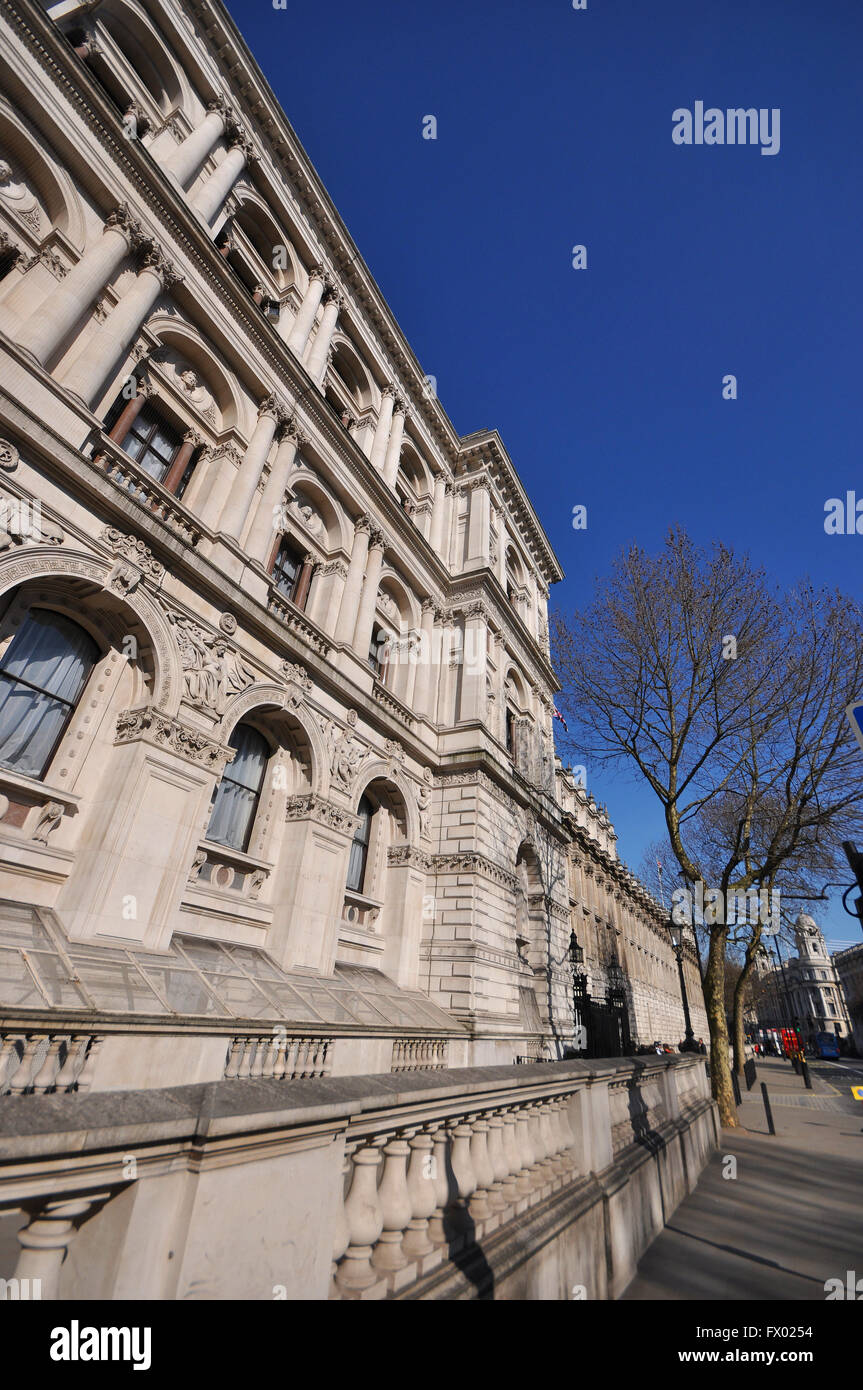The Foreign, Commonwealth and development Office occupies a building which originally provided premises for four separate government depts, London, UK

Image details
Contributor:
Avpics / Alamy Stock PhotoImage ID:
FX0254File size:
34.9 MB (2.1 MB Compressed download)Releases:
Model - no | Property - noDo I need a release?Dimensions:
2848 x 4288 px | 24.1 x 36.3 cm | 9.5 x 14.3 inches | 300dpiDate taken:
2 April 2016Location:
Whitehall, London, UKMore information:
The Foreign and Commonwealth Office (FCO), commonly called the Foreign Office, is a department of the Government of the United Kingdom. It is responsible for protecting and promoting British interests worldwide. It was created in 1968 by merging the Foreign Office and the Commonwealth Office. The head of the FCO is the Secretary of State for Foreign and Commonwealth Affairs, commonly abbreviated to "Foreign Secretary" (currently Philip Hammond). This position is regarded as one of the four most prestigious appointments in the Cabinet, alongside those of Chancellor of the Exchequer and Home Secretary. Together with the Prime Minister, these are the Great Offices of State. The FCO is managed from day-to-day by a civil servant, the Permanent Under-Secretary of State for Foreign Affairs, who also acts as the Head of the Her Majesty's Diplomatic Service. This position is held by Sir Simon McDonald, who took office on 1 September 2015. The Foreign and Commonwealth Office occupies a building which originally provided premises for four separate government departments: the Foreign Office, the India Office, the Colonial Office, and the Home Office. Construction on the building began in 1861 and finished in 1868, and it was designed by the architect George Gilbert Scott. Its architecture is in the Italianate style; Scott had initially envisaged a Gothic design, but Lord Palmerston, then Prime Minister, insisted on a classical style. English sculptors Henry Hugh Armstead and John Birnie Philip produced a number of allegorical figures ('Art', 'Law', 'Commerce', etc.) for the exterior.